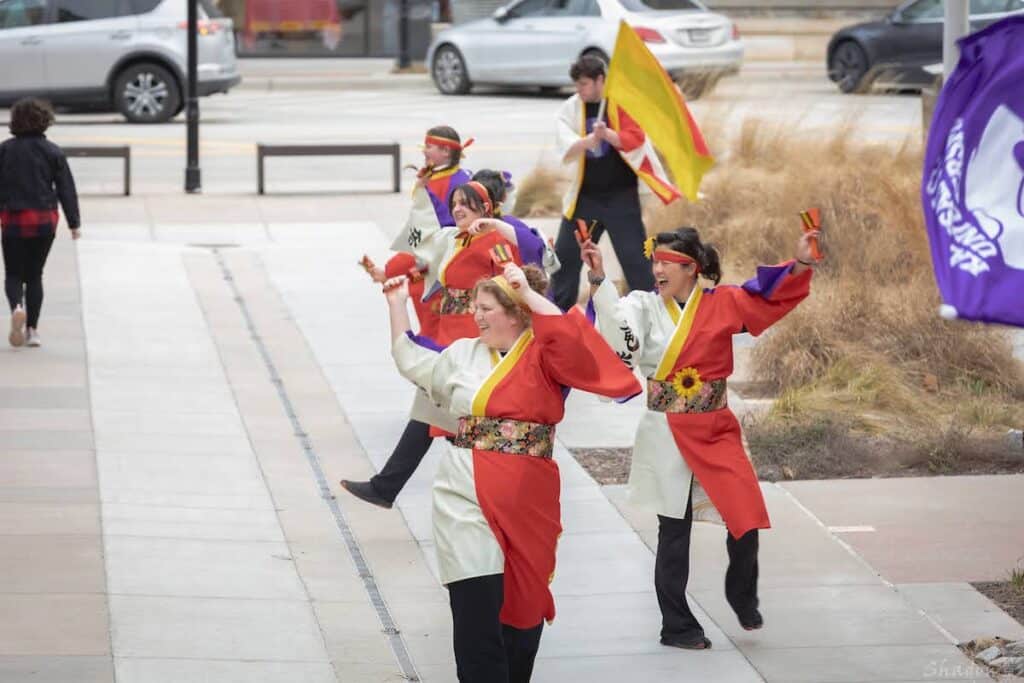Yosakoi is a dynamic and colorful dance form that emerged in Kochi, Japan, in the 1950’s. Yosakoi blends traditional Japanese dance elements with modern music and rhythms, creating an energetic and culturally inclusive experience.
One of the signature features of Yosakoi is the use of “naruko,” wooden clappers that dancers hold, adding a unique sound and visual element to their performances. Originally used by farmers to scare birds from their fields, these clappers have become a symbol of the dance itself.
The popularity of Yosakoi has led to its spread across Japan and beyond, with numerous festivals and competitions dedicated to the dance style. The most notable of these is the annual Yosakoi Festival in Kochi, the birthplace of the dance, where teams showcase their elaborate routines and costumes. These events not only celebrate the rich cultural heritage of Yosakoi but also its evolution into a global phenomenon, welcoming participants and spectators from all walks of life. Yosakoi’s accessibility and joyful nature make it a compelling way for people to connect with Japanese culture and with each other.

In 2005, Seiji Ikeda founded the Kansas State University Yosakoi Dance group, inspired by his experiences with Yosakoi dancing during his time in the JET Program. Ikeda’s initiative brought this unique dance form to the heart of Kansas, fostering a unique cultural bridge between American and international students at K-State.
In 2006 and 2007, dancers from Kansas State University Yosakoi Dance group participated in the Yosakoi Soran Festival in Hokkaido, Japan, where they competed against thousands of dancers and earned several performance awards.
Today, Tatsumaki Yosakoi operates from Manhattan, Kansas, with a sister team in Kansas City, continuing to spread the joy and energy of Yosakoi dancing. In 2019, the group was honored with the title of Official Yosakoi Ambassador by Kochi Prefecture, a testament to their efforts in promoting Yosakoi around the world. This accolade highlights Tatsumaki’s role in fostering global cultural exchange and understanding through dance.